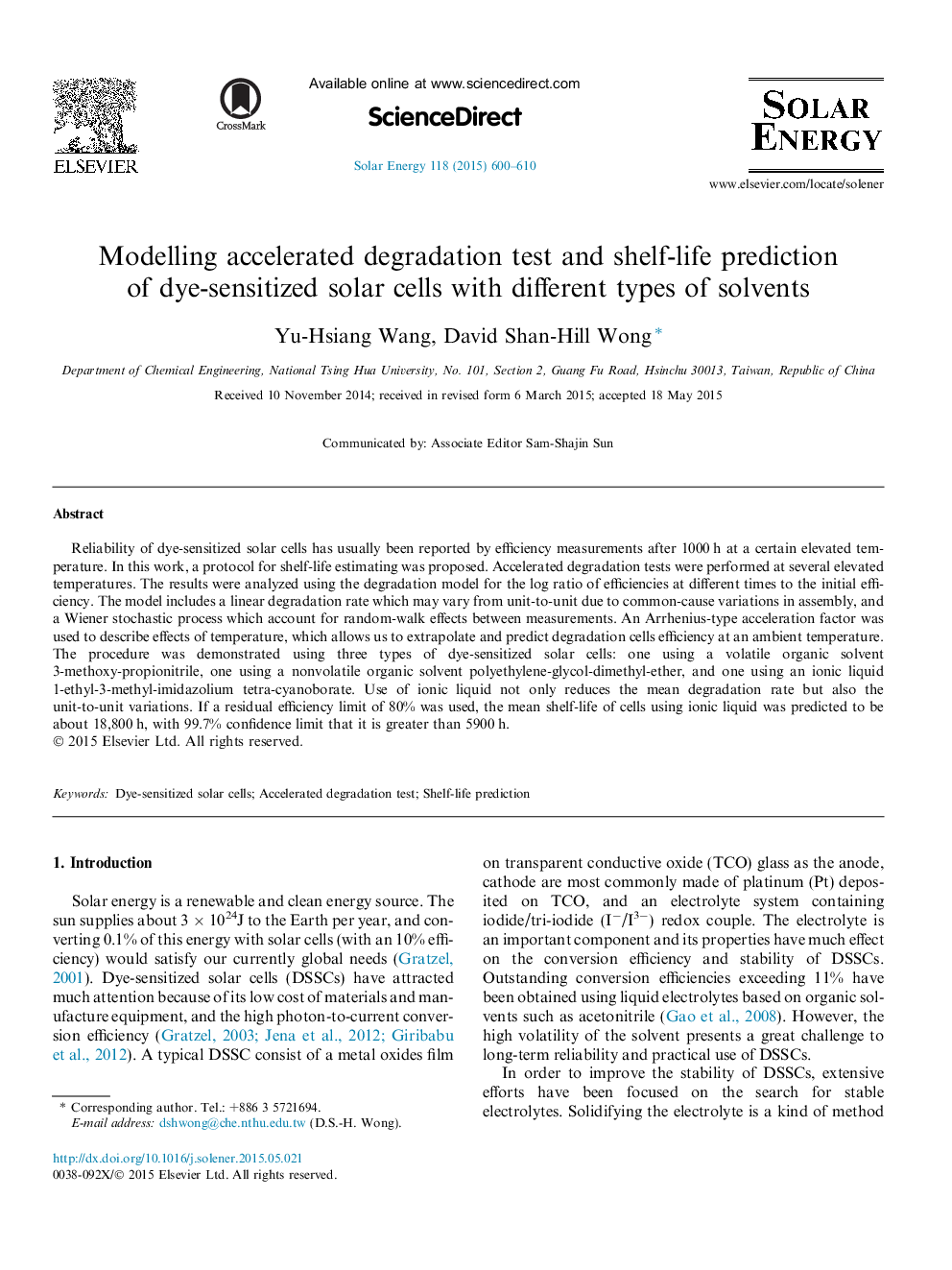| Article ID | Journal | Published Year | Pages | File Type |
|---|---|---|---|---|
| 7937818 | Solar Energy | 2015 | 11 Pages |
Abstract
Reliability of dye-sensitized solar cells has usually been reported by efficiency measurements after 1000Â h at a certain elevated temperature. In this work, a protocol for shelf-life estimating was proposed. Accelerated degradation tests were performed at several elevated temperatures. The results were analyzed using the degradation model for the log ratio of efficiencies at different times to the initial efficiency. The model includes a linear degradation rate which may vary from unit-to-unit due to common-cause variations in assembly, and a Wiener stochastic process which account for random-walk effects between measurements. An Arrhenius-type acceleration factor was used to describe effects of temperature, which allows us to extrapolate and predict degradation cells efficiency at an ambient temperature. The procedure was demonstrated using three types of dye-sensitized solar cells: one using a volatile organic solvent 3-methoxy-propionitrile, one using a nonvolatile organic solvent polyethylene-glycol-dimethyl-ether, and one using an ionic liquid 1-ethyl-3-methyl-imidazolium tetra-cyanoborate. Use of ionic liquid not only reduces the mean degradation rate but also the unit-to-unit variations. If a residual efficiency limit of 80% was used, the mean shelf-life of cells using ionic liquid was predicted to be about 18,800Â h, with 99.7% confidence limit that it is greater than 5900Â h.
Related Topics
Physical Sciences and Engineering
Energy
Renewable Energy, Sustainability and the Environment
Authors
Yu-Hsiang Wang, David Shan-Hill Wong,
